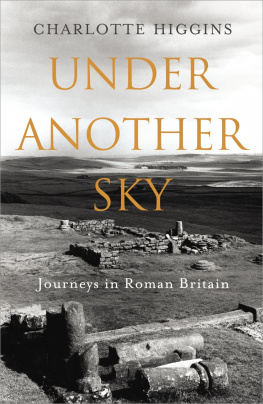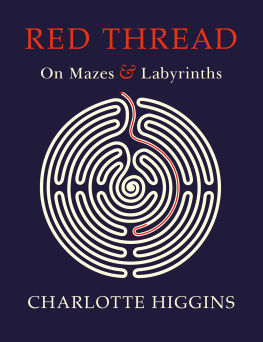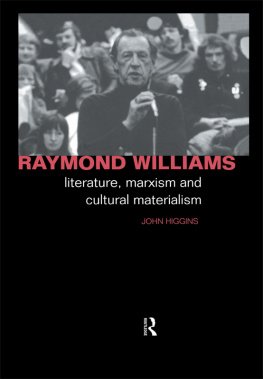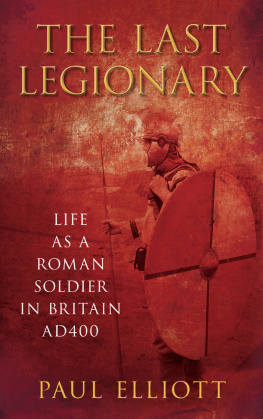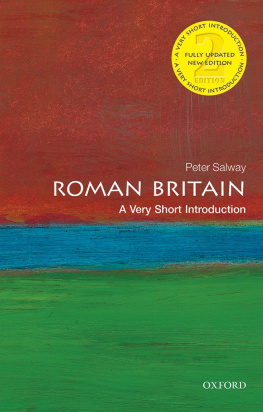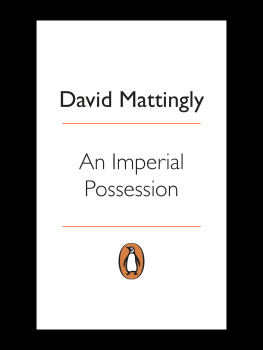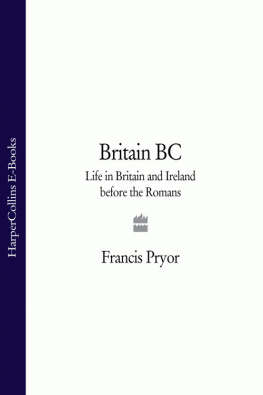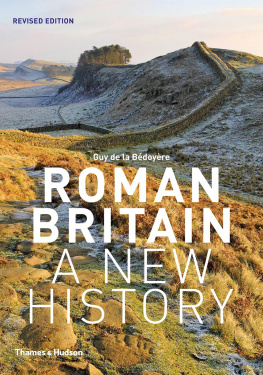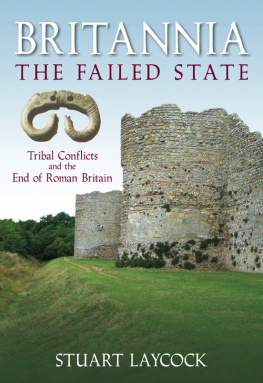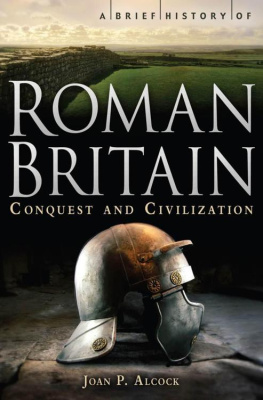Contents
List of Illustrations
List of Maps
Under Another Sky
Journeys in Roman Britain
CHARLOTTE HIGGINS

To Matthew Fox
Reliquias veterumque vides monimenta virorum.
(You see the relics and monuments of ancient men.)
Virgil, Aeneid 8
And thorns shall come up in her palaces, nettles and brambles in the fortresses thereof.
Isaiah 34
A Note on Names
The now customary spelling Boudica is adopted except when referring to works of art that employ Boadicea, frequently used in the eighteenth and nineteenth centuries. Similarly, the spelling Caratacus is used except when referring to Elgars cantata Caractacus, and its main character.
Introduction
When I was eleven or twelve years old, I was taken on a school trip to Hadrians Wall. It was a long, tedious drive to Northumberland from north Staffordshire. We visited Housesteads, one of the best-preserved forts on the line of the wall (which was built in the AD 120s, spanning Englands waist between the Solway Firth and the Tyne). There was a light drizzle. It was very cold. I have no sense now of having been moved by, or even particularly interested in, the low, rubbly remains. All I can remember clearly from that trip are the well-preserved toilets, precisely the detail that a twelve-year-old would pick out: a line of stone ledges above a drain, with an English Heritage signboard showing a row of Roman squaddies relieving themselves. After looking at them, we got back into the coach and drove south again.
This was emphatically not one of the formative experiences that ignited in me an unquenchable fascination with the classical world. That such a thing did happen, I put down to two, entirely different, childhood events: a family holiday to Crete and the ancient palace of Knossos, where I got caught up in the mystery of labyrinths, princesses, minotaurs and magicians; and reading a 1950s book of stories from the Iliad and the Odyssey belonging to one of my elder brothers, the beautiful pictures in which, even more than the text, conjured fantastic visions of gods and goddesses, heroes and monsters. As time went by, the tone was set by these early encounters, fuelled by an inspiring teacher who drummed into me, slowly and painfully, the rudiments of Latin and Greek. Little by little I opened a portal on to a world of poems and stories: the thrilling ambiguities of Virgil, the passions of Catullus and Sappho, the Wildean wit of Ovid. And later, the humane expanses of Herodotus; the spiked cynicism of Tacitus.
I studied classics at university, then became a journalist. In my thirties I wrote books about Latin love poetry and Greek literature, but I still wasnt very interested in Roman Britain, except by way of an abiding love of Rosemary Sutcliffs classic childrens story The Eagle of the Ninth, in which the young centurion Marcus Aquila ventures to the badlands north of Hadrians Wall. Roman Britain still struck me as an unglamorous outpost on the fringes of empire, lacking any really good remains to compare with those of Rome, or Africa, or even France. Nor did it seem to have produced any really interesting Romans: Spain had its Martial, Syria its Lucian, Africa its Terence, but there is no record of any literary genius sprung from Roman Britain, nor any British-born emperor, nor even a single British senator.
Something happened, though, when I visited Hadrians Wall for the second time, in 2008. Here was Housesteads again, but I began to see how it stood in its landscape, the wall marching away on the edge of a spectacular volcanic ridge. Inside the little museum attached to the fort I saw stone carvings of curious deities, not at all part of the Olympian canon: the trio of Celtic goddesses known as the Matres, mothers, with fruit and bread in their laps; and a sculpture of three enigmatic cloaked figures, the Genii Cucullati, the hooded deities. Housesteads also had a Mithraeum a temple devoted to the cult of Mithras, with its perfume of Persian mysticism. Roman soldiers sprung from Germany and the Low Countries had worshipped these strange gods. This was not the Rome I thought I knew.
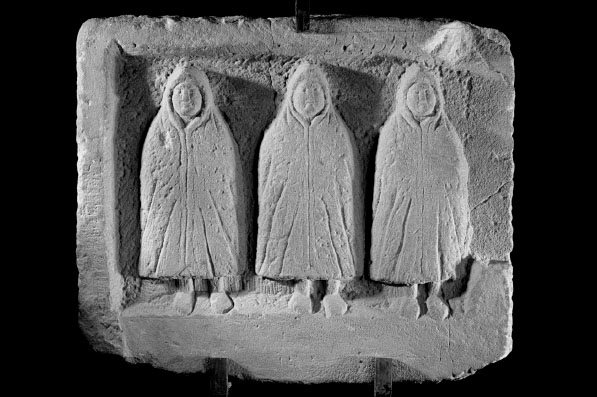
There were other things that caught my attention: in the guidebook was a reproduction of a drawing of the fort by the antiquary William Stukeley, dating from 1725. He showed the fields below the fort strewn with Roman gravestones and altars not tidied away into a museum collection, just lying exposed to the weather. There was material about John Clayton, the wealthy antiquary and Newcastle upon Tyne town clerk who had bought the fort in the mid nineteenth century; and there were photographs of it being restored or rather, from the look of it, rebuilt. It seemed to me that there were some interesting questions about how these remains had been thought about in the past, before they ended up as a neat English Heritage site.
And so I set out to discover Roman Britain in earnest, a copy of Roger Wilsons superb A Guide to the Roman Remains in Britain in my hand a work, inexplicably out of print, that is the nearest equivalent, for enthusiasts of Roman Britain, to Pevsners architectural guides. In 2009 I went to Hadrians Wall again, walking along it from Carlisle to Newcastle. Over the next two summers, my boyfriend Matthew and I travelled in search of Roman remains in his delightful, though not particularly trusty, 1974 VW camper van, taking two journeys a western route, from London to the Cotswolds to Wales and north to Cumbria; and an eastern one, from Edinburgh through Yorkshire and Lincolnshire to Norfolk. On the second trip, the van lasted only until York before collapsing from one of its many and varied complaints. One July I walked along the Antonine Wall the barrier built in the AD 140s from the Firth of Forth to the Firth of Clyde, which, briefly, marked the northernmost frontier of the empire. There were also many short forays, day trips and detours to see Roman remains, in which I would entice patient friends and members of my family to visit forts, or bath houses, or museums. One May morning I even dragged a bewildered string quintet to inspect a battered, illegible Roman inscription in a Cornish church.

This book is very far from a comprehensive account of Britains Roman remains. Instead, I wanted to see what I could learn from an encounter with them. Not to discover what being in Roman Britain was like for I was convinced of the irrecoverability of the lives of people from the deep past, except as manifestations of the historical imaginations of those who described them. Rather, I wanted to think about what this period means, and has meant, to a British sense of history and identity. I wanted to discover the ways in which the idea of Roman Britain has resonated in British culture and still forms part of the texture of its landscape not just through the sublime contours of the Northumberland hills, but in humbler urban and suburban tracts of territory.
My search brought me into the company of many fascinating minds from the past, from the great sixteenth-century humanist William Camden, author of Britannia, a masterly topographical and antiquarian survey of Britain, to the shadowy figure of Charles Bertram, who fooled luminaries such as Stukeley with one of British historiographys most successful hoaxes. Through all this, it became clear how richly generative Roman Britain had been, how productive artistically and intellectually for those who had encountered it. There were stories by Thomas Hardy, poems by W. H. Auden and Wilfred Owen, music by Britten and Elgar, Joseph Conrads black musings on the Romans in Britain in
Next page
